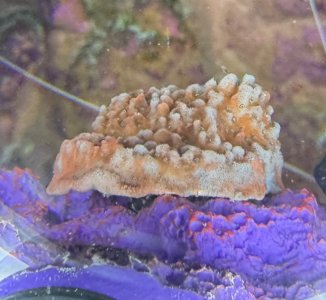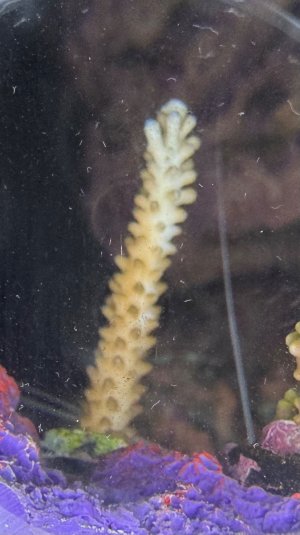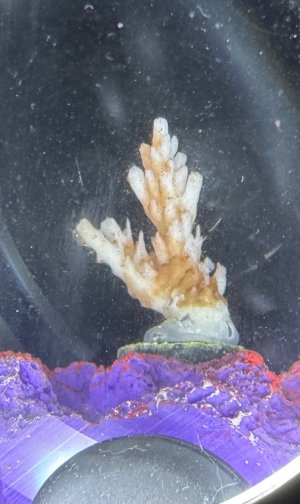So, this brings an idea to mind, inspired by the process I go through for acclimating inverts and sensitive fish for my freshwater tanks.
Probably massive overkill, but...
With more sensitive/delicate corals (or especially, down the road, with properly expensive ones), like
@project1004 says above, you might want to find out what the parameters of the water they're being kept in are.
Me? I think I would maybe stand up a QT tank with those parameters, or as close as you can manage. You probably aren't going to want to switch salts in your display or anything - though, shoot, for expensive corals, you might actually ask if they'd be willing to include (for a fee, of course) enough salt to mix up 5 - 20 gallons or so - but rather just try to get the water in the QT tank
as close as possible to the water it came from, and ensure your display isn't too far out of line with
what it needs. Either way, go ahead try to get the QT water as close to the seller's parameters as possible. Worst case, simply test the water it came in: it will have been in this water for a few days now, so matching it as closely as you can should reduce the initial transfer shock, regardless of whether it has drifted from the parameters it was normally kept in.
Then, slowly drip the "QT water" you've mixed up into the water the coral (or animal) shipped in until you've
at least doubled the amount of water it shipped in, if not more - this should take no less than an hour, at minimum: the more sensitive the species, the longer it should take, and the temp in the bag/bucket/whatever should be fairly close to the temp of the QT tank.
Since we're using a QT tank for conditioning/observation, once there's enough water in the holding/transfer container to keep the livestock submerged, go ahead and transfer the stock (
including the water it shipped in) into the QT tank, and continue slowly dripping water from your mixing bucket into the QT tank until you've got at least 5 gallons worth.
Now we begin observation and acclimatization. If you feel the need to do a dip, do so either immediately if the animal is looking especially rough and demands it, or 8 - 24 hours after putting it in QT, if it's looking especially good and isn't likely to be perturbed by it. Over the next few days, do a 10% - 20% water changes on the QT tank each day (or no more often than every 8 hours), replacing it with water
from your main display tank (
not freshly made salt water) until you have accomplished at least a 100% water change (if not
200%) over that observation period.
This way you can give it time to adjust gradually to the parameters of your display tank (and not your raw, fresh salt mix). Remember, stability is one of the most important things in this hobby, and transitions should be managed slowly and carefully. Giving the animal time to adjust should make it much easier for it to adapt comfortably to your parameters instead of being shocked by them.



